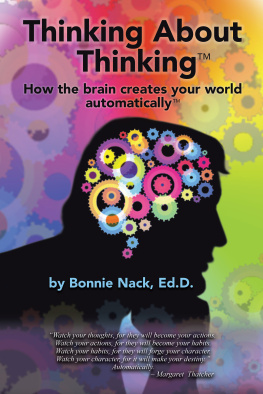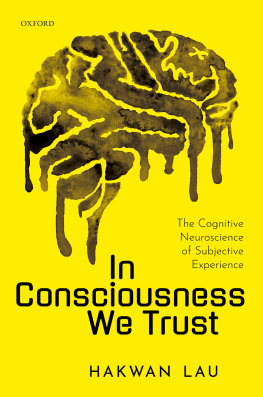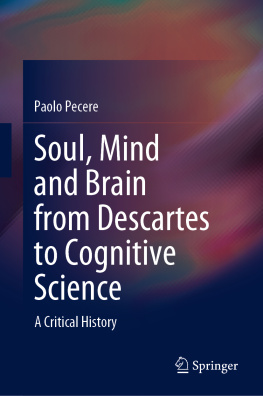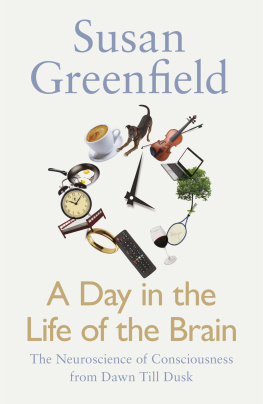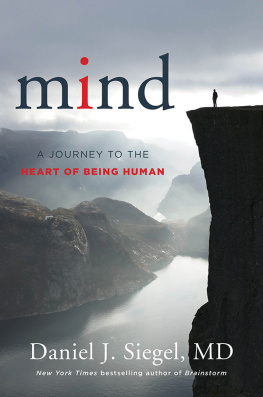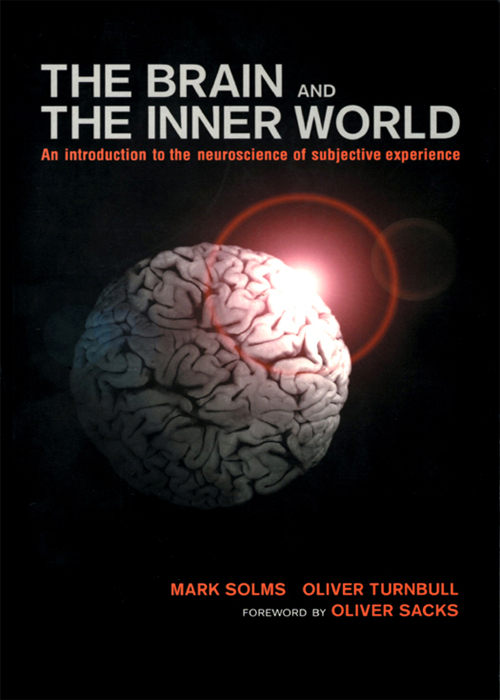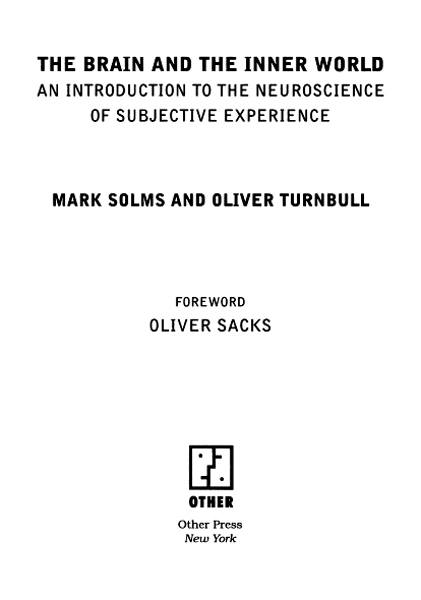A. W. Freud et al., reproduced by arrangement with Paterson Marsh Agency, London.
reprinted with the permission of Cambridge University Press from J. A. Hobson, E. F. Pace-Schott, & R. Stickgold, Dreaming and the brain: Towards a cognitive neuroscience of conscious states. Behavioral and Brain Sciences, 23 (2000): 793842.
Copyright 2002 by Mark Solms and Oliver Turnbull
Foreword 2002 by Oliver Sacks
All rights reserved, including the right to reproduce this book, or parts thereof, in any form, without written permission from Other Press, LLC, except in the case of brief quotations in reviews for inclusion in a magazine, newspaper, or broadcast. For information write to Other Press, LLC, 2 Park Avenue, 24th Floor, New York, NY 10016. Or visit our Web site: www.otherpress.com.
The Library of Congress has catalogued the printed edition as follows:
Solms, Mark
The brain and the inner world: an introduction to the neuroscience of subjective experience / Mark Solms and Oliver Turnbull.
p. cm.
eISBN: 978-1-59051-459-7
1. Higher nervous activity. 2. Neuropsychology. 3. Subjectivity.
I. Turnbull, Oliver, 1964 II. Title.
QP395 .S65 2002
612.82dc21 2002016900
v3.1
CONTENTS
CHAPTER 1
Introduction to Basic Concepts
CHAPTER 2
Mind and BrainHow Do They Relate?
CHAPTER 3
Consciousness and the Unconscious
CHAPTER 4
Emotion and Motivation
CHAPTER 5
Memory and Phantasy
CHAPTER 6
Dreams and Hallucinations
CHAPTER 7
Genetic and Environmental Influences on Mental Development
CHAPTER 8
Words and Things: The Left and Right Cerebral Hemispheres
CHAPTER 9
The Self and the Neurobiology of the Talking Cure
CHAPTER 10
The Future and Neuro-Psychoanalysis
FOREWORD BY OLIVER SACKS
This is the fourth book of which Mark Solms is the principal author. The Brain and the Inner World, coauthored with Oliver Turnbull, is complementary to Solmss earlier books, expanding and clarifying considerations raised there, especially in his Neuropsychology of Dreams and Clinical Studies in Neuro-Psychoanalysis. The main ideas in these books have exercised Dr. Solms for at least fifteen years, for it was in early 1987 that he first wrote to me, enclosing a fascinating paper in which he spoke of his intention to examine the relationship between psychoanalysis and neuropsychology [and] to show that psychoanalysis is based on sound neurological principlesgrand ideals, which I could only admire.
In all of his work, Solms has clarified that so-often-misunderstood moment of transition in the 1890s when Freud appeared to abandon a neurological explanation for psychoanalysis (Solmss first book, coedited with Michael Saling, was entitled A Moment of Transition). The reason for this, Solms showed, was the very inadequate state of neurological (and physiological) understanding at the time, not any turning against neurological explanation in principle. Freud knew that any attempt to bring together psychoanalysis and neurology would be premature (although he himself made a last attempt at this in his 1895 Project, which he left unpublished in his lifetime).
Neurology itself had to evolve, from a mechanical science that thought in terms of fixed functions and centers, a sort of successor to phrenology, through much more sophisticated clinical approaches and deeper understandings, to a more dynamic analysis of neurological difficulties in terms of functional systems, often distributed widely through the brain and in continual interaction with each other. Such an approach was pioneered by A. R. Luria in the Soviet Union. But neuropsychology, as this approach came to be called, only got going during the Second World War, so, sadly, Freud never saw it, never knew how Luria had lifted clinical neurology to an entirely new level, a level perhaps complementary to that of psychoanalysis.
Indeed, Luria himself, as Solms has pointed out, was intensely interested in psychoanalysis as a young man and explored it quite deeply. But then, with the deepening intolerance of the 1930s, the very name of Freud became anathema in the Soviet Union, and it would have been impolitic, even suicidal, for Luria to continue. And yet Lurias first big book, his Traumatic Aphasia, published in 1947, had deep (if unacknowledged) indebtedness to Freuds On Aphasia of more than fifty years earlier.
Perhaps it could only be decades later that someone like Solms, equally trained in both neuroscience and psychoanalysis, equally drawn to both, could dream of conjoining Freud and Luria, conjoining the insights and approaches of neuropsychology and psychoanalysis, to aim at a science richer than either, a science that Solms sometimes calls neuro-psychoanalysis and sometimes depth neuropsychology.
For classical neuropsychology, in a sense, only touches the surface of the mindthe surface character of perception, memory, language, thought, emotion, consciousness, personality, identityand this is because of its objective and test-oriented approach. The appreciation of deeper determinants (which will be active in patients with neuropsychological problems no less than in the rest of us) requires the establishment of a genuine relationship between doctor and patient, a transference, the examination of resistances, and a patient attention to all that is said or not said, shown or concealed, and the use of free association to allow the mind maximum spontaneity.
Solmss approach, then, is a double one: to make the most detailed neuropsychological examination of patients with brain damage and then to submit them to a model psychoanalysis, and, in so doing, hopefully, to both deepen neuropsychology and ground psychoanalysisto bring the mechanisms of the brain and the inner world of the patient together.
In addition to these essentially clinical approaches, there has been the development of wonderful forms of brain imaging in the past twenty years, making possible detailed studies of the brains functional anatomy and metabolism, and also of experimental neuroscientific approaches to the mechanisms of emotion, attention, cognition, and consciousness. Thus the time for a synthesis draws closer and closer.
In all areas of science, but perhaps especially in biology and medicine, where the individuality of the organism and the particularities of life are all-important, one needs to have two sorts of bookclinical studies or case studies, in which neuro- or psychoanalysis are taken as far as they can go; and books organized according to concept and theme. Thus there are Freuds case historiesand there are his Introductory Lectures; there are Lurias case historiesand there are his expository books, such as Higher Cortical Functions (a highly technical book) and The Working Brain (a book designed to be accessible to anybody who is interested, who really wants to come to grips with neuropsychology). It is similar with Solmss bookswe were recently given his brilliant Clinical Studies in Neuro-Psychoanalysis (coauthored with Karen Kaplan-Solms), and now we have this new thematic and systematic book, The Brain and the Inner World, written with Oliver Turnbull and aimed, as they say in their preface, at the nonspecialist reader.
There are some neurological or neuropsychological syndromes that seem easily compatible with psychoanalytic or metapsychological conceptsthus, large frontal-lobe lesions (such as that which affected Phineas Gage, after a tamping iron was thrust through his brain) can give rise to an impulsive, thoughtless, conscienceless state, sometimes called a psychopathy or pseudopsychopathyand in such patients it is very much as if their superego functions have been extinguished (though not just these). The driven, violently appetitive states seen with some hypothalamic and periventricular lesions (or the absence of basic drives if there is massive destruction in these areas) suggest that it is in these primitive areas of central gray matter that much of the basis of the id resides. There are almost incredible states that may go with massive right-hemisphere lesions, where half the body may be neglected, disowned, or attributed preposterously to someone elseand such syndromes (it has seemed to neuroscientists like V. S. Ramachandran as well as to Solms) may involve a form of repression, and not just neural disconnection.



